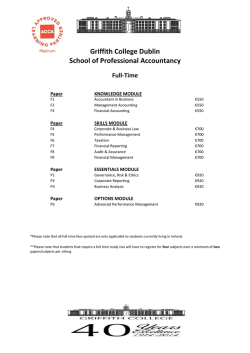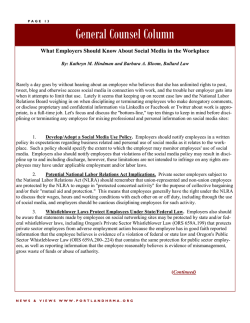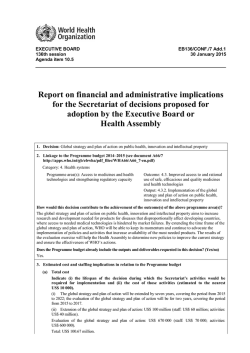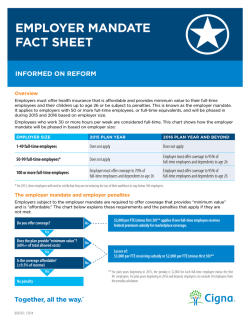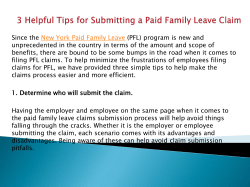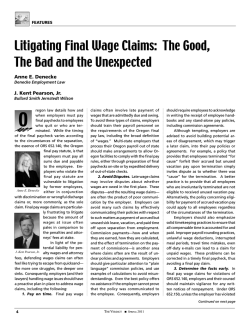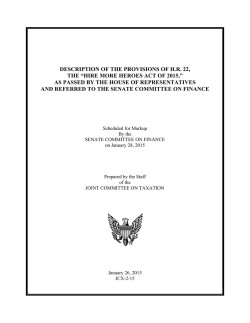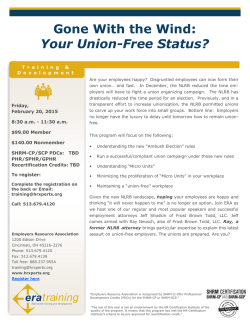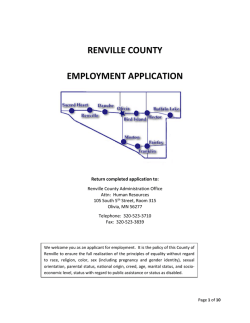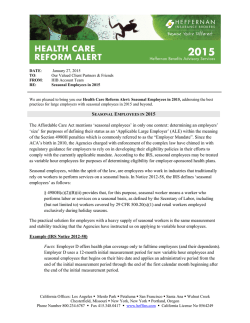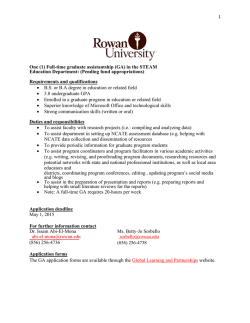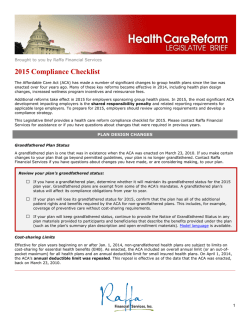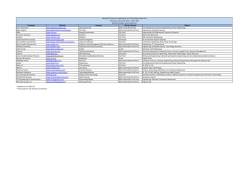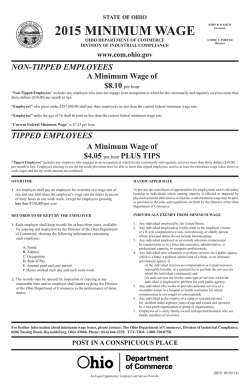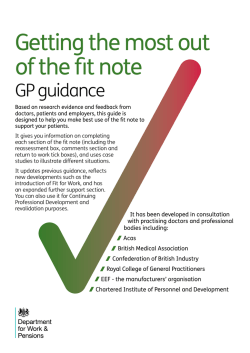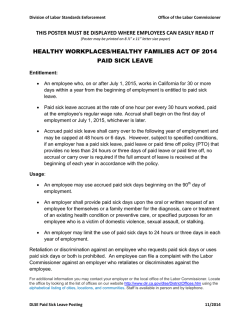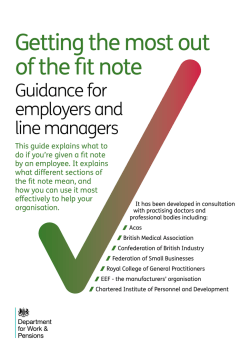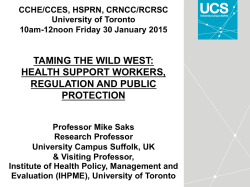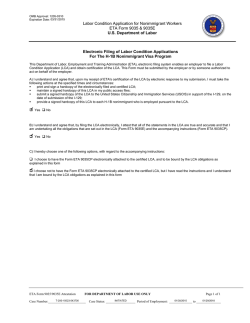
Fact Sheet - Department of the Treasury
U.S. TREASURY DEPARTMENT FACT SHEET Final Regulations Implementing Employer Shared Responsibility Under the Affordable Care Act (ACA) for 2015 Provisions to Assist Smaller Businesses and Businesses that Offer Most but Not All Employees Coverage in 2015 Approximately 96 percent of employers are small businesses and have fewer than 50 workers and are exempt from the employer responsibility provisions. To ensure a gradual phase-in and assist the employers to whom the policy does apply, the final rules provide, for 2015, that: o The employer responsibility provision will generally apply to larger firms with 100 or more full-time employees starting in 2015 and employers with 50 or more full-time employees starting in 2016. o To avoid a payment for failing to offer health coverage, employers need to offer coverage to 70 percent of their full-time employees in 2015 and 95 percent in 2016 and beyond, helping employers that, for example, may offer coverage to employees with 35 or more hours, but not yet to that fraction of their employees who work 30 to 34 hours. Various Employee Categories The final regulations provide clarifications – many of which are based on comments on the proposed regulations – regarding whether employees of certain types or in certain occupations are considered full-time, including: o Volunteers: Hours contributed by bona fide volunteers for a government or tax-exempt entity, such as volunteer firefighters and emergency responders, will not cause them to be considered full-time employees. o Educational employees: Teachers and other educational employees will not be treated as part-time for the year simply because their school is closed or operating on a limited schedule during the summer. 1 o Seasonal employees: Those in positions for which the customary annual employment is six months or less generally will not be considered fulltime employees. o Student work-study programs: Service performed by students under federal or state-sponsored work-study programs will not be counted in determining whether they are full-time employees. o Adjunct faculty: Based on the comments we received, the final regulations provide as a general rule that, until further guidance is issued, employers of adjunct faculty are to use a method of crediting hours of service for those employees that is reasonable in the circumstances and consistent with the employer responsibility provisions. However, to accommodate the need for predictability and ease of administration and consistent with the request for a “bright line” approach suggested in a number of the comments, the final regulations expressly allow crediting an adjunct faculty member with 2 ¼ hours of service per week for each hour of teaching or classroom time as a reasonable method for this purpose. Provisions to Assist Businesses to Comply in 2015 To provide a gradual phase-in of the employer responsibility provisions and assist employers in complying and providing coverage, the final rules provide transition relief for 2015. While the employer responsibility provisions will generally apply starting in 2015, they will not apply until 2016 to employers with at least 50 but fewer than 100 full-time employees if the employer provides an appropriate certification described in the rules. Employers that are subject to the employer responsibility provisions in 2015 must offer coverage to at least 70 percent of full-time employees as one of the conditions for avoiding an assessable payment, rather than 95 percent which will begin in 2016. Full-Time Employee Status Determinations Like the December 2012 proposed regulations, the final rules allow employers to use an optional look-back measurement method to make it easier to determine whether employees with varying hours and seasonal employees are full-time. Responding to comments, the final regulations also clarify the application of this method and the alternative monthly method of determining full-time status. Affordability Safe Harbors Like the proposed regulations, the final rules provide safe harbors that make it easy for employers to determine whether the coverage they offer is affordable to employees. These safe harbors permit employers to use the wages they pay, their employees’ hourly rates, or the federal poverty level in determining whether employer coverage is affordable under the ACA. 2 Other Specific 2015 Provisions In addition to the two forms of 2015 transition relief noted earlier, a package of limited transition rules that applied to 2014 under the proposed regulations is extended to 2015 under the final regulations, including: o Employers first subject to shared responsibility provision: Employers can determine whether they had at least 100 full-time or full-time equivalent employees in the previous year by reference to a period of at least six consecutive months, instead of a full year. This will help facilitate compliance for employers that are subject to the employer shared responsibility provision for the first time. o Non-calendar year plans: Employers with plan years that do not start on January 1 will be able to begin compliance with employer responsibility at the start of their plan years in 2015 rather than on January 1, 2015, and the conditions for this relief are expanded to include more plan sponsors. o Dependent coverage: The policy that employers offer coverage to their full-time employees’ dependents will not apply in 2015 to employers that are taking steps to arrange for such coverage to begin in 2016. o On a one-time basis, in 2014 preparing for 2015, plans may use a measurement period of six months even with respect to a stability period – the time during which an employee with variable hours must be offered coverage – of up to 12 months. o As these limited transition rules take effect, we will consider whether it is necessary to further extend any of them beyond 2015. Next Steps: Final Rules Simplifying Employer Information Reporting Many comments on the proposed employer information reporting regulations have urged that final rules provide streamlined ways to comply with employer information reporting -- especially for employers that offer highly affordable coverage to all or virtually all of their full-time employees. Others have asked for a single form for employer and insurer reporting provisions when possible. Treasury and the IRS will issue final regulations shortly that aim to substantially simplify and streamline the employer reporting requirements. For the final employer shared responsibility regulations, click here. For more information on determining whether an employer is subject to the employer shared responsibility regulations, click here. ### 3
© Copyright 2025
